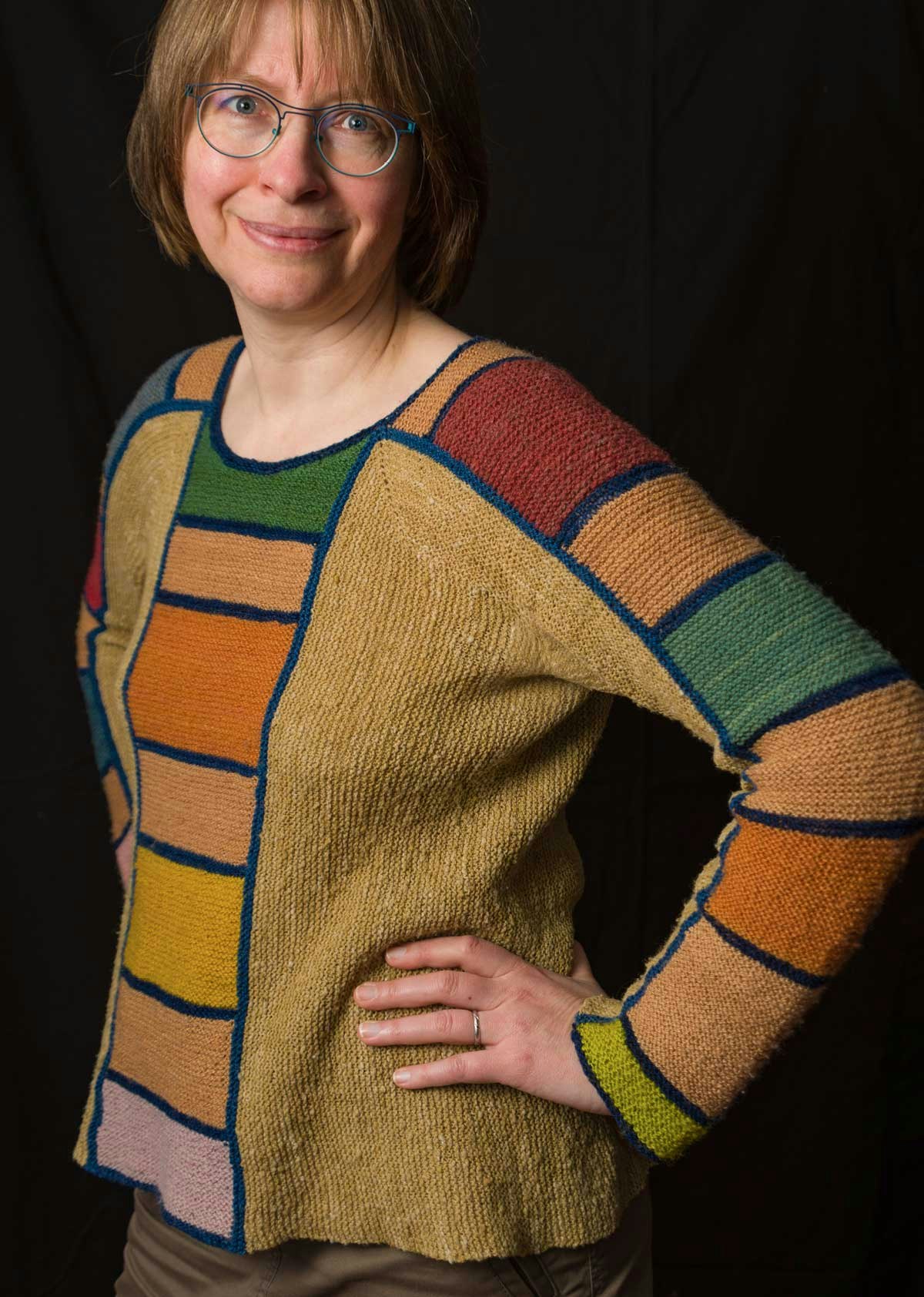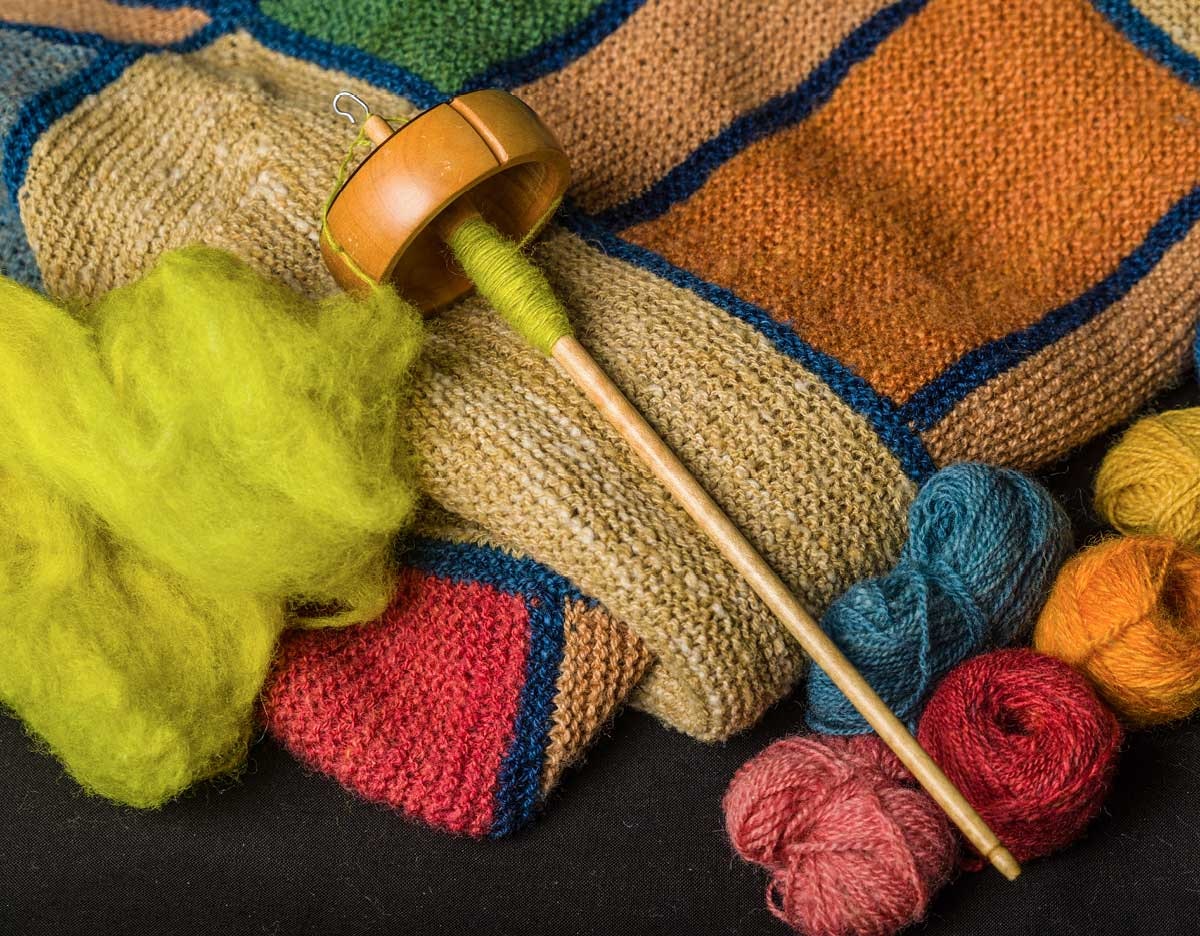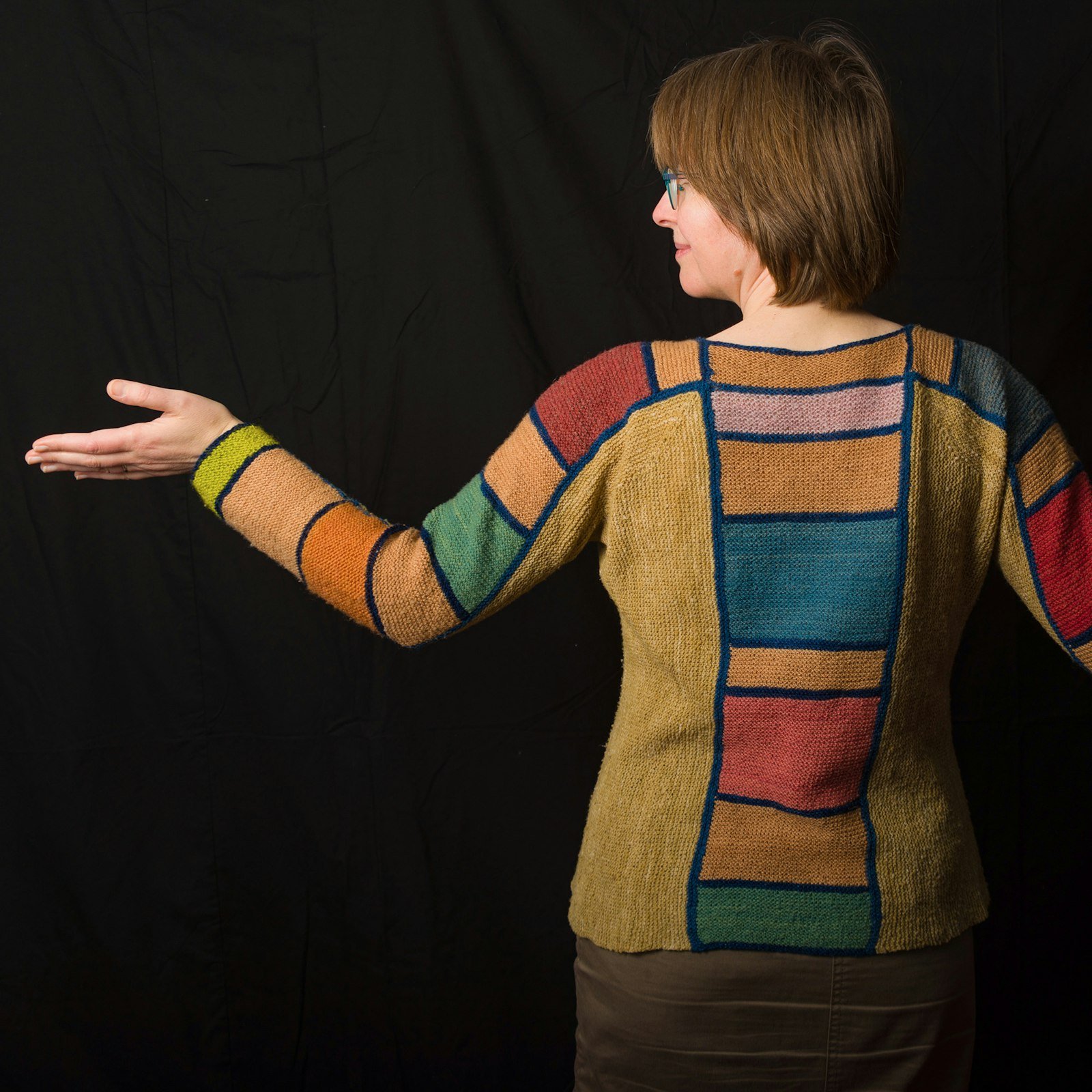Pattern and designer Squarely by Annette Danielsen
Fiber/preparation About 110 grams (3.9 ounces) of main color (MC), plant-dyed commercial Merino/soy silk top, blended with about 110 grams (3.9 ounces) of natural white Merino d’Arles top on a blending board; 195 grams (6.9 ounces) dark blue indigo-dyed commercial Merino top and milk-protein fiber; about 120 grams (4.2 ounces) from a mixed bag of Bluefaced Leicester/Merino mini batts, hand-dyed with plants and cochineal, producing 12 rainbow colors that were extended to 14 by blending blue and red with a natural brown South American top on a blending board; and about 201 grams (7.1 ounces) of brown Merino superwash top (18.5 microns), hand-dyed with onion skins.
Wheel system/spindle IST Crafts top-whorl spindle, 22 grams; Tom Walther “Anna” travel wheel, with accelerator.
Drafting method Semiworsted, with twist in the drafting zone.
Singles direction Z-spun.
Yarn 2-ply; MC 18 wpi, 2,610 ypp; dark blue 18 wpi, 2,366 ypp; rainbow colors 16 wpi, 2,484 ypp; and brown 14 wpi, 1,984 ypp.
Yarn classification/weight Fingering weight.
Total yardage MC 1,269 yards; dark blue 782 yards; rainbow colors 40 to 95 yards each; and brown 880 yards.
Yardage used MC 837 yards; dark blue 133 yards; rainbow colors 407 yards; and brown 179 yards.
Needles Size 2½ (3 mm).
Gauge 27 sts x 54 rows = 4" in garter stitch.
Finished size Medium, 39" chest measurement, blocked.

Beate shines in naturally dyed colors. Photo by Ulrich Schifferings
This project started with beautiful plant- and cochineal-dyed fibers in rainbow shades from a fiber swap I participated in. I divided the colors to spin each one separately on my drop spindle, and then I plied the singles on my Anna wheel. I wanted a large, stunning project that could emphasize the beauty of these yarns. Suddenly, the Squarely pattern came to mind; it’s the cover project from Annette Danielsen’s booklet Strik med stumper. I immediately knew that my indigo-blue leftovers would be perfect for the dark contrasting stripes, so I started planning my Squarely Rests pullover.
I first set up some rules: All colors should be naturally dyed or naturally colored sheep’s wool, and all yarns should be handspun. I had two bags of rainbow-colored batts from a natural dyer, which gave me a total of 14 different shades. Based on the required yardage, this was not enough for the color panels, so I looked for other botanically dyed fibers in my stash. I found leftovers of a brown handspun lace yarn that was dyed with onion skins, and it matched the necessary wraps per inch.
The next challenge was to find a coordinating main color. I found a soft Merino/soy silk top in my stash. The dyer had used madder, sandalwood, chamomile, and black hollyhock to achieve an orangish green. I blended this fiber with natural white Merino d’Arles on my self-made blending board and gained 220 grams worth of ready-to-spin mini batts in a soft, light-green color.
I am normally a process spinner, and I had never tried to match a specific yarn weight before. The wool for the original pattern was Isager Tvinni, and I am happy that my finished light fingering-weight yarn matches the recommended commercial yarn.
The last challenge occurred because the pattern states that each colored square should be the same size. I wanted to use every single shade and knew that the smaller amounts would not be enough for the squares. I decided that the brown color, from my stash, would be used for about 50 percent of the colored squares and would be used alternately with one of the other colors, making up for the missing rows of the previous square when needed. I also decided to extend a colored block if only a few meters of a color were left, and then I skipped the same number of rows in the next brown color block.

Top-whorl spindle from IST Crafts. Photo by Ulrich Schifferings
The resulting pullover is my favorite sweater, and I’m still receiving compliments for it from crafters and noncrafters alike; it’s totally mine, in color and style. But what I really love in this project is that, as long as you use naturally dyed fibers, all of the colors and shades match; they are harmonious together just like wildflowers in a meadow. I’ve never seen this harmony with acid-dyed colors.
Have a finished object to share? Tell us about it! Contact [email protected] to submit your project.
This article was published in the Summer 2020 issue of Spin Off.

